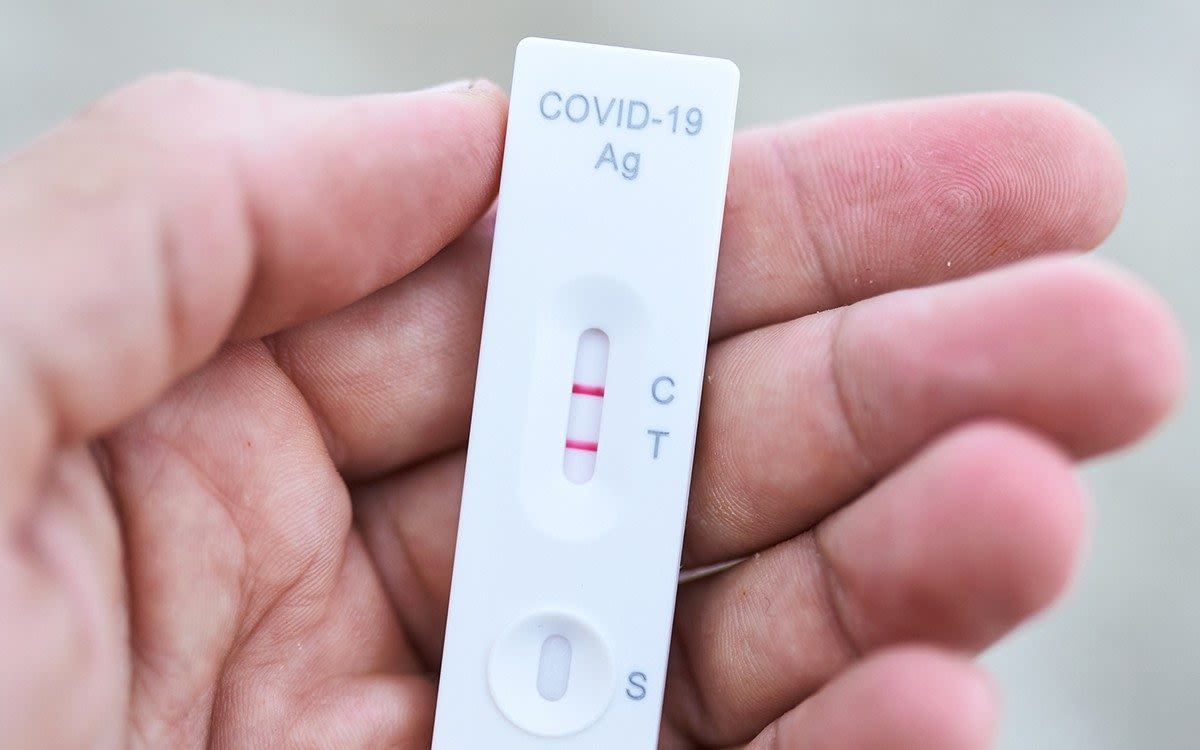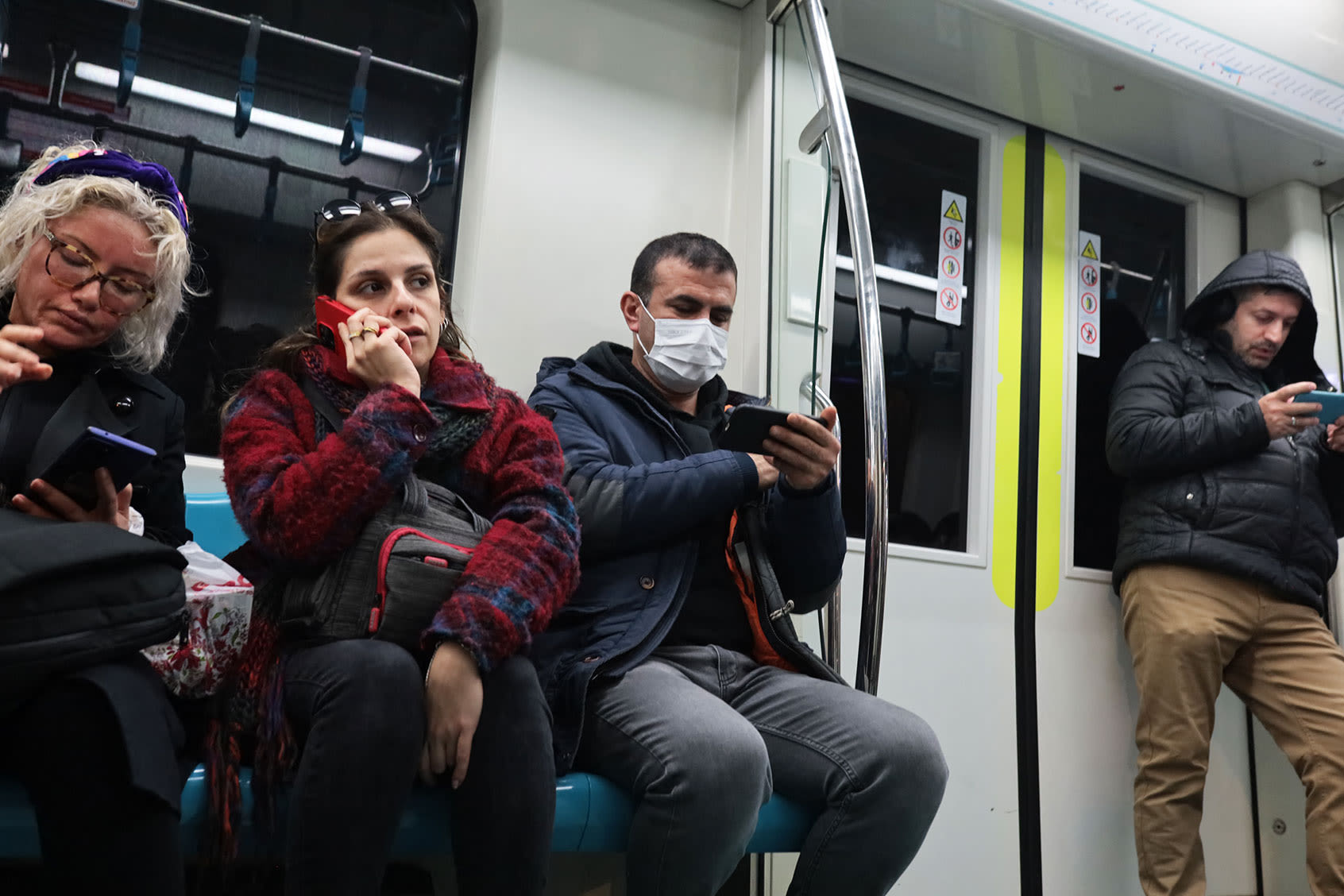Search results
News about COVID-19, COVID, symptoms
News about COVID, COVID-19, SARS-CoV-2
Also in the news
Jun 21, 2024 · On average, a mild to moderate COVID-19 infection lasts for 10 days. However, how quickly you bounce back from a COVID-19 infection depends on various factors, including your health before the infection, any underlying conditions you may have, and which variant of the virus you have contracted.
- How Long Does COVID-19 Stay In Your Body? - Verywell Health
As a general rule, most people with mild to moderate COVID...
- How Long Does COVID Stay in Your System? - Verywell Health
Most people are potentially infectious with COVID-19 for 10...
- How Long Does COVID-19 Stay In Your Body? - Verywell Health
May 8, 2024 · As a general rule, most people with mild to moderate COVID are no longer contagious 10 days after symptoms first appear. However, it can take longer for people with severe symptoms or weakened immune systems to clear the virus and no longer be contagious.
Nov 29, 2023 · Most people are potentially infectious with COVID-19 for 10 days. People are typically the most infectious the first five days after they are diagnosed. Antibodies to the virus can last for months after infection or vaccination.
Mar 23, 2020 · As the number of cases of COVID-19 rises, experts continue to learn more about the disease. They know that symptoms include fever, cough and shortness of breath. But what does the virus do inside your body to cause those symptoms?
- Overview
- How long does coronavirus last in the body?
- How long does the virus last on clothes and surfaces?
- How long does it last in the air?
- How long does it last in food?
- What to do if symptoms appear
- Prevention
- Summary
Understanding how long COVID-19 lasts in a person’s system and how long it stays alive on surfaces or in the air, can help prevent transmission.
The novel coronavirus, SARS-CoV-2, spreads easily from person to person.
This article explores the available research on how long the novel coronavirus lasts in the body and how long it remains active in various situations.
Coronavirus data
All data and statistics are based on publicly available data at the time of publication. Some information may be out of date. Visit our coronavirus hub for the most recent information on COVID-19.
Was this helpful?
The novel coronavirus, SARS-CoV-2, is the virus responsible for causing the illness COVID-19. Most people who develop COVID-19 symptoms improve without treatment in 2–6 weeks. However, this does not necessarily reflect how long the virus itself remains active in the body.
COVID-19 has an incubation period, meaning it can be days before a person notices symptoms. In the case of SARS-CoV-2, a person can transmit the virus 48 hours before developing symptoms.
Many people experience mild symptoms, while some experience no symptoms at all. This can make it difficult to tell who has the virus.
How long the virus lasts in the body depends on the individual and the severity of the illness. The Centers for Disease Control and Prevention (CDC) advise that people who test positive for COVID-19 should isolate themselves for the following amount of time:
These figures represent when a person is most at risk for transmitting SARS-CoV-2 to others.
However, the virus may remain in the body at low levels for up to 3 months after diagnosis. This may mean some people get a second positive test result even after they recover, although this does not necessarily indicate the virus is still transmissible.
A study from the New England Journal of Medicine investigated how long SARS-CoV-2 would survive on various surfaces, including plastic, stainless steel, copper, and cardboard. The findings suggest that the virus could survive for:
•4 hours on copper
•24 hours on cardboard
•72 hours on plastic and steel
However, while researchers can detect SARS-CoV-2 on various surfaces under laboratory conditions, it is unclear if this corresponds to a risk of infection under normal circumstances.
A September 2020 study in The Lancet found that when researchers swabbed various surfaces in a major hospital in Italy, only one item of protective equipment tested positive for SARS-CoV-2. They conclude that, as long as people follow standard cleaning procedures, the risk of transmission from surfaces is low.
The study on surfaces also found that SARS-CoV-2 could survive in aerosol form for 3 hours. An aerosol is a fine mist of liquid suspended in a gas, such as air.
As the experiment ended after 3 hours, the total amount of time that SARS-CoV-2 survives in the air could be longer. However, some factors, such as air temperature and humidity, may also play an important role.
A June 2020 review notes that other coronaviruses survive for longer in colder, less humid air. This may mean SARS-CoV-2 will become a more seasonal virus in some climates. The study on surfaces also did not consider how the virus might travel through the air in everyday situations.
SARS-CoV-2 spreads via respiratory droplets, which are tiny drops of liquid that enter the air when a person coughs, sneezes, or talks. A May 2020 study found that loudly talking can emit thousands of these droplets into the air, remaining airborne for around 8–14 minutes in a confined space.
Currently, there is no direct evidence a person can contract SARS-CoV-2 from food. The World Health Organization (WHO) state that coronaviruses need a live animal or human host to survive, and that they cannot multiply on food packaging surfaces.
The WHO suggest washing fruits and vegetables as normal and washing hands thoroughly before eating. People should also ensure they do not share cutlery or plates with those who may have COVID-19.
If a person believes they have symptoms of COVID-19, or they may have been exposed to the virus that causes it, they should self-isolate in their home and call a doctor. Do not visit a healthcare facility without calling ahead first.
According to the CDC, COVID-19 symptoms can include:
•fever
•cough
•shortness of breath
•fatigue
The best way to prevent COVID-19 and stop transmission to others is to avoid exposure to the virus that causes it. The CDC recommend:
•washing the hands frequently with soap and water for at least 20 seconds
•using hand sanitizer containing at least 60% alcohol, if soap and water are not available
•avoiding touching the face, particularly the nose, eyes, or mouth with unwashed hands
•staying at least 6 feet, or 2 meters, away from people who are outside of a person’s household
•wearing a mask in public places, when around people from other households, or in situations where physical distancing is difficult
The novel coronavirus, or SARS-CoV-2, is active in the body for at least 10 days after a person develops symptoms. In people with severe illness, it may last up to 20 days. In some people, low levels of the virus are detectable in the body for up to 3 months, but by this time, a person cannot transmit it to others.
There is currently no evidence the virus can survive in food, but early evidence suggests it may last several hours on copper, 24 hours on cardboard, and up to 72 hours on plastic and steel. However, this does not necessarily mean the virus detected on these materials can trigger an infection.
Aug 6, 2023 · A mild case of COVID-19 usually resolves in one to two weeks. It may take up to six weeks or more to recover from a severe case. Some people may experience lasting symptoms, called...
Jan 3, 2023 · Early research suggested that it could take 2 weeks for your body to get over a mild illness or up to 6 weeks for severe or critical cases. Recovery varies for different people,...



